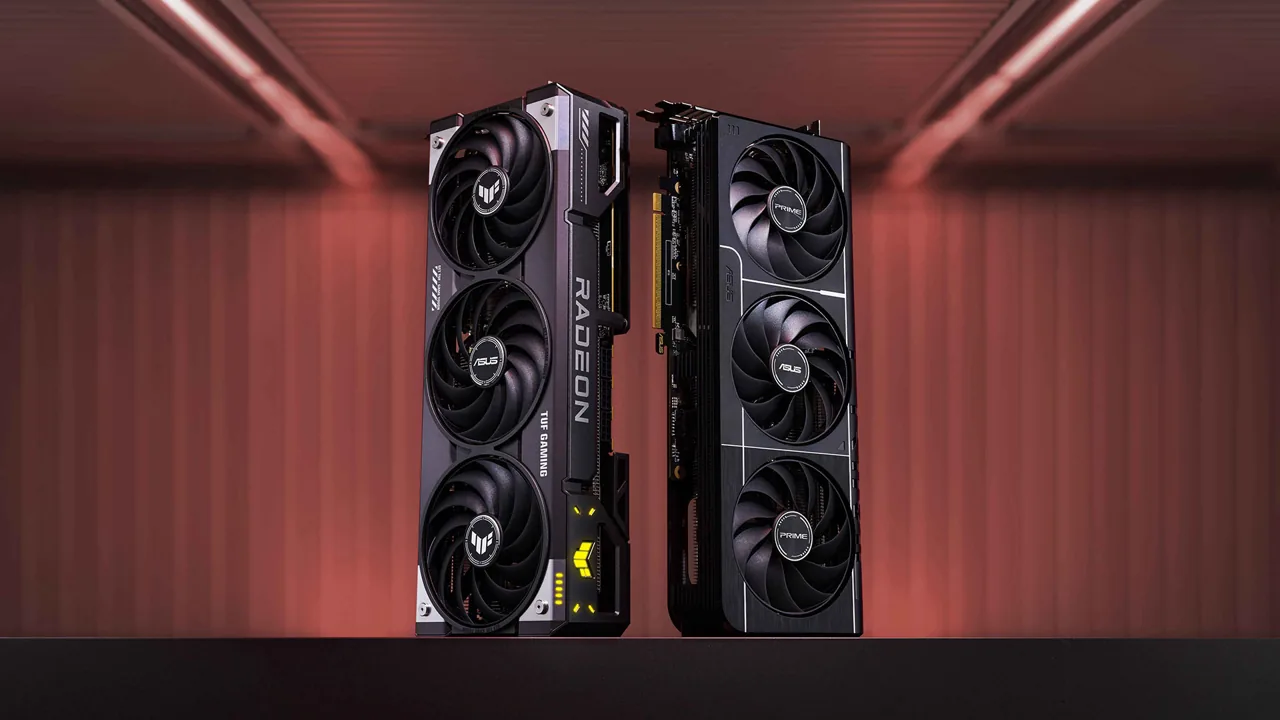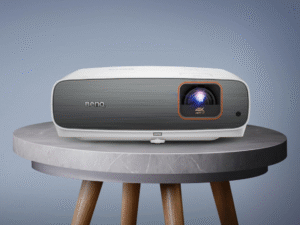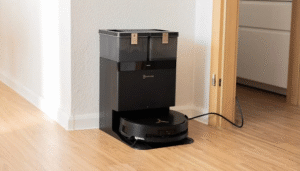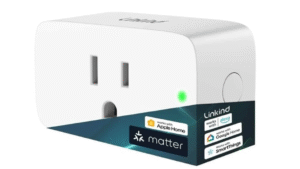RX 9070 XT vs RX 9070: Which One Offers Better Performance?[2025 Guide]
When you purchase through links on our site, we may earn an affiliate commission. This does not cost you any additional money.
When comparing the AMD 9070 XT to its non-XT sibling, we’ve uncovered some surprising performance differences that might influence your next GPU purchase. The RX 9070 XT delivers roughly 9-12% better performance than the standard RX 9070 across most games, while costing just 9% more.
In our extensive testing, the performance gap becomes even more impressive at higher resolutions. Compared to NVIDIA’s RTX 5070, the RX 9070 XT pulls ahead by a substantial 29% at 4K, 21% at 1440p, and 14-15% at 1080p. Additionally, the AMD 9070 XT vs 9070 XT comparison reveals significant spec differences – the XT model packs 64 compute units against the standard version’s 56, paired with a much higher boost clock of 2,970 MHz versus 2,540 MHz.
However, this performance boost comes with tradeoffs. The RX 9070 XT draws considerably more power with a 304W TGP compared to the RX 9070’s 220W. If you’re wondering whether the AMD Radeon RX 9070 XT is worth the premium, we’ve put both cards through rigorous benchmarks across 57 games to help you decide which offers better value for your specific gaming needs.
Specs Breakdown: RX 9070 XT vs RX 9070
| RX 9070 XT | RX 9070 | |
|---|---|---|
| Strong rasterization performance | ✅ | ✅ |
| Higher clock speeds | ✅ | ❌ |
| Better ray tracing performance | ✅ | ❌ |
| More AI processing power | ✅ | ❌ |
| Lower power consumption | ❌ | ✅ |
| More budget-friendly | ❌ | ✅ |
The architectural foundation of both AMD 9070 XT and 9070 reveals significant differences that explain their performance gap. Both cards utilize the same Navi 48 GPU die manufactured on TSMC’s N4P process, yet their internal configurations vary considerably.
Compute Units and Clock Speeds
Under the hood, the RX 9070 XT packs 64 RDNA 4 Compute Units delivering 4096 Stream Processors, alongside 64 Ray Accelerators and 128 AI Accelerators. In contrast, the standard RX 9070 features 56 Compute Units with 3584 Stream Processors, 56 Ray Accelerators, and 112 AI Accelerators – about 14.2% fewer across the board.
The clock speed difference is equally noteworthy. The 9070 XT operates at a 2400 MHz game clock and reaches up to 2970 MHz boost clock, whereas the non-XT model runs at 2070 MHz game clock and 2540 MHz boost clock. This translates to approximately 16.9% higher frequencies on the XT model. These differences contribute to the XT’s impressive 48.7 TFLOPS of single-precision compute performance versus 36.1 TFLOPS for the standard 9070.
Memory Configuration and Bandwidth
Interestingly, both GPUs share identical memory specifications. Each card comes equipped with 16GB of GDDR6 memory running at 20 Gbps across a 256-bit bus, delivering 640 GB/s of bandwidth. Both models also feature 64MB of AMD’s Infinity Cache. Despite these memory similarities, the processing power difference remains significant due to the compute unit disparity.
Power Draw: 304W vs 220W
Perhaps the most striking difference lies in power requirements. The RX 9070 XT demands a substantial 304W TBP (Total Board Power) and recommends a 750W power supply. On the other hand, the standard RX 9070 operates much more efficiently at 220W TBP with a recommended 650W PSU. This represents a 38.1% higher power draw for the XT variant.
Both cards typically utilize two 8-pin power connectors, although some partner models of the XT might require three connectors for additional power headroom. The standard RX 9070’s lower power consumption makes it notably more efficient than its NVIDIA counterpart, using 30W less than the RTX 5070’s 250W TBP.
PCIe Interface and Display Outputs
Both cards support the latest PCIe 5.0 x16 interface, theoretically doubling the bandwidth available through PCIe 4.0, although real-world performance gains from this upgrade remain minimal. For display connectivity, the reference designs feature three DisplayPort 2.1a ports and one HDMI 2.1b port. These are UHBR13.5 (54 Gbps) DisplayPort connections, though specifications note only two simultaneous DP2.1 connections can be active at once.
Most partner cards maintain the same output configuration, though some models offer two HDMI and two DisplayPort connections instead.
![image-10 RX 9070 XT vs RX 9070: Which One Offers Better Performance?[2025 Guide]](https://www.techselectx.com/wp-content/uploads/2025/04/image-10.png)
Rasterization Performance Across Resolutions
In real-world testing, the performance gap between these two RDNA 4 graphics cards varies significantly across different resolutions. Let’s examine exactly how much extra performance you get for that premium.
1080p Gaming: 8–10% Lead for XT
At 1080p resolution, the RX 9070 XT delivers a modest but noticeable advantage over its non-XT counterpart. Across multiple test suites, the XT model consistently performs 8-10% better than the standard 9070. Specifically, at 1080p ultra settings, the XT card pulls ahead by approximately 10%, while at medium settings, this advantage narrows slightly to 8%.
For perspective, in some games this translates to roughly 5 FPS difference from 92 to 97 FPS on average. Furthermore, when compared to Nvidia’s offerings, the standard RX 9070 outperforms the RTX 5070 by 4-7% at this resolution.
1440p Gaming: 11–13% Performance Gap
Moving to 1440p, the performance difference becomes more pronounced. The 9070 XT typically delivers an 11-13% performance advantage over the standard model. In GamerNexus testing, the XT model maintained about a 13% lead in Resident Evil 4, running at 172 FPS versus the non-XT’s 195 FPS.
Particularly impressive is how both cards stack up against Nvidia’s lineup. The RX 9070 outperforms the RTX 5070 by 8% at 1440p, while the 9070 XT extends this lead to 21%. In specific titles like Starfield, the 9070 XT pushes 31% ahead of the RTX 5070.
4K Gaming: 15%+ Advantage for 9070 XT
The performance delta widens significantly at 4K resolution. Overall, the XT leads by approximately 15% at 4K, with some tests showing advantages up to 16%. This makes the XT variant significantly more capable for 4K gaming despite only costing 9% more.
Against Nvidia’s offerings, the standard 9070 beats the RTX 5070 by 12% at 4K, while the XT version extends this lead to an impressive 21-29%. This represents outstanding value considering the price differential between AMD and Nvidia cards.
Game-Specific Wins: Cyberpunk, Starfield, Resident Evil 4
Certain games showcase the 9070 XT’s capabilities especially well:
- Cyberpunk 2077: The 9070 XT delivers 61 FPS at 4K ultra settings compared to 53 FPS for the non-XT (15% improvement). Against the RTX 5070, it pulls ahead by 25-27%.
- Starfield: The 9070 XT outperforms both the standard 9070 and even the RTX 5070 Ti at both resolutions tested. It delivers a 36% advantage over the RTX 5070 at 4K.
- Resident Evil 4: At 4K, the 9070 XT reached 103 FPS versus 91 FPS for the standard 9070 (13% difference). Remarkably, this puts it near the RTX 4080 Super’s 105 FPS—a card costing almost twice as much.
![image-11-1024x539 RX 9070 XT vs RX 9070: Which One Offers Better Performance?[2025 Guide]](https://www.techselectx.com/wp-content/uploads/2025/04/image-11-1024x539.png)
Ray Tracing and Upscaling Capabilities
Ray tracing performance marks a crucial battleground for modern GPUs, with AMD’s RDNA 4 architecture finally closing the gap against NVIDIA’s dominance in this area. The third-generation ray tracing accelerators in these cards have dramatically improved performance compared to previous generations.
Ray Tracing at 4K: 9–16% XT Advantage
The Radeon RX 9070 XT consistently outperforms its non-XT sibling across ray-traced workloads. At 4K resolution, the performance gap widens beyond what we saw in rasterization tests. In Cyberpunk 2077 with RT Ultra settings, the 9070 XT leads by 14%. Likewise, in Dying Light 2, the advantage extends to 16% at 4K, narrowing to 14% at 1440p.
These differences become more pronounced as ray tracing complexity increases. In Metro Exodus Enhanced at 4K, the 9070 remains 15% slower than the XT variant. Indeed, across six ray-traced games tested, the standard 9070 averages 13% slower than the 9070 XT.
FSR 4 vs DLSS 4: Upscaling Quality and Support
FSR 4 represents AMD’s most significant upscaling leap to date. Unlike FSR 3, which suffered from blurring, shimmering, and poor handling of fine details, FSR 4 delivers substantially improved image quality that approaches NVIDIA’s DLSS 4.
The biggest differences between these technologies:
- Image Quality: FSR 4 now looks almost identical to DLSS 4 in most scenarios
- Performance Impact: FSR 4 can provide 2-2.8x performance boost in Quality mode
- Hardware Requirements: FSR 4 currently only supports RX 9000 series cards
According to testing, enabling FSR 4 might actually result in slightly lower framerates than FSR 3 in some games. For instance, in Call of Duty: Warzone, the 9070 XT reached 250 fps with FSR 3 but only 229 fps with FSR 4. This is by design, as FSR 4 prioritizes image quality over raw performance.
Performance in RT-Heavy Titles: Black Myth, Dying Light 2
Ray tracing performance varies dramatically between games. In Black Myth: Wukong, RDNA 4 GPUs struggle significantly. At 1440p with Very High RT enabled, the 9070 manages only 25 fps compared to the RTX 5070’s 46 fps. The 9070 XT improves this to 31 fps, but both cards struggle to deliver playable framerates without aggressive upscaling.
Conversely, in Dragon’s Dogma 2 with ray tracing at 4K, the 9070 achieves 56 fps, giving the 9070 XT a 9% lead. Moreover, both AMD cards outperform the RTX 5070, with the standard 9070 leading NVIDIA’s offering by 15%.
Looking at Dying Light 2 at 4K with ray tracing, the 9070 falls 13% behind the XT model and 11% behind the RTX 5070. Despite these challenges, the 9070 still performs 10% better than the previous generation 7900 XT.
Power Efficiency and Thermal Behavior
Unlike raw performance metrics, power efficiency reveals a surprising advantage for the standard RX 9070 over its XT counterpart. The significant 84W power difference between these cards creates interesting efficiency dynamics worth examining.
Performance per Watt: 9070 Leads in F1 24 and Starfield
The power consumption gap between these cards is substantial the RX 9070 XT draws 304W under load while the standard 9070 operates at just 220W. This represents a 38% higher power requirement for the XT variant despite delivering only 9-15% better performance.
In F1 24 at 4K with ray tracing enabled, the standard 9070 demonstrates exceptional efficiency. It matches the efficiency of the RTX 4080 Super while offering a 24% efficiency advantage over the RTX 5070. Remarkably, the 9070 XT falls behind its non-XT sibling in this metric, landing closer to the 5070’s efficiency level.
Similarly, in Starfield at 1440p, the standard 9070 achieves 0.43 FPS per watt compared to just 0.34 for the XT model. This ties it with the RTX 5070, eroding one of Nvidia’s traditional advantages.
Thermal Output and Cooling Requirements
Hotspot GPU temperatures across partner models of the 9070 XT range from 75°C (XFX Mercury) to 87°C (Nitro+). The Sapphire Pure runs at 81°C, while Asus TUF Gaming operates at 80°C and the Asrock Taichi reaches 85°C.
Memory temperatures typically operate between 85-90°C depending on the model. VRM temperatures show greater variation, with Asrock Taichi and Sapphire Nitro+ reaching just above 80°C, while XFX Mercury and Asus TUF Gaming maintain temperatures below 70°C.
Case airflow remains important for both cards, with at least two intake fans recommended for optimal cooling. Under proper cooling conditions, well-designed cards typically maintain temperatures between 65-75°C.
Noise Levels: XT vs Non-XT Under Load
Consequently, the thermal behavior affects noise profiles significantly. The Asrock Taichi, Sapphire Pure, and Nitro+ 9070 XT models run virtually silent, producing less noise than case fans. The XFX Mercury operates just barely audible above case fans, while the Asus TUF Gaming is noticeably louder though still reasonably quiet.
Some partner models demonstrate impressive acoustic performance the Asrock RX 9070 XT Steel Legend registered just 34.2 dB under full load, making it the second quietest card tested while running at just 32% fan speed.
Given the substantial efficiency advantage of the standard 9070, many users may find its lower noise and heat output preferable to the XT’s modest performance gains, especially for sustained gaming sessions.
Pricing, Availability, and Value Proposition
The suggested retail prices of the AMD 9070 XT and 9070 stand in stark contrast to their market reality, creating a complex value proposition for potential buyers.
MSRP vs Real-World Pricing Trends
AMD officially set the RX 9070 at $549 and the RX 9070 XT at $599. Nevertheless, these MSRPs quickly proved elusive. Most retailers sold out their limited MSRP stock within hours of launch. Subsequently, prices escalated dramatically, with the RX 9070 XT experiencing increases of 11.7% to 21.7% in the US ($70-$130 above MSRP). Many retailers now list the 9070 XT above $800, with some reaching $850-$960. Frank Azor of AMD insisted that “cards will be available from multiple vendors at $549/$599,” yet market reality suggests otherwise.
Regional Price Differences: US, Canada, Germany, Australia
Price disparities extend globally, with particularly severe markups outside North America. In Germany, median prices hover between €700-€800. The Philippines experiences extreme markups, with prices ranging from PHP 42,000 to 56,000. In Europe, one user reported the 9070 costing €600 while the XT variant demanded €750. Australia and the UK face similar inflation, with UK prices increasing by 14-17.4% for the XT model.
Cost per Frame Analysis: 9070 vs 9070 XT
From a value perspective, the calculation becomes intriguing. At MSRP, the 9070 XT costs just 9% more while delivering 11-13% better performance at 1440p. In cost-per-frame analysis, both cards show nearly identical efficiency across all resolutions. Given real-world pricing, however, this equation changes drastically. When the price gap exceeds 15%, the standard 9070 typically offers better value.
Which Card Offers Better Long-Term Value?
For long-term value, several factors come into play. The RX 9070 XT remains 17% cheaper than RTX 5070 Ti at current retail prices ($750 vs $900), offering approximately 12% better value. Reports suggest AMD may be temporarily subsidizing prices through selective rebates to partners, indicating potential future price increases. Realistically, whichever card you can find closer to MSRP represents the better investment, with availability often trumping slight performance differences.
| Specification | RX 9070 XT | RX 9070 |
|---|---|---|
| Core Specifications | ||
| Compute Units | 64 | 56 |
| Stream Processors | 4096 | 3584 |
| Ray Accelerators | 64 | 56 |
| AI Accelerators | 128 | 112 |
| Game Clock | 2400 MHz | 2070 MHz |
| Boost Clock | 2970 MHz | 2540 MHz |
| Compute Performance | 48.7 TFLOPS | 36.1 TFLOPS |
| Memory | ||
| Memory Size | 16GB GDDR6 | 16GB GDDR6 |
| Memory Speed | 20 Gbps | 20 Gbps |
| Memory Bus | 256-bit | 256-bit |
| Memory Bandwidth | 640 GB/s | 640 GB/s |
| Infinity Cache | 64MB | 64MB |
| Power & Thermal | ||
| TBP (Total Board Power) | 304W | 220W |
| Recommended PSU | 750W | 650W |
| Performance (vs RX 9070) | ||
| 1080p Performance | +8-10% | Baseline |
| 1440p Performance | +11-13% | Baseline |
| 4K Performance | +15% | Baseline |
| Ray Tracing (4K) | +13-16% | Baseline |
Conclusion: Which Card Should You Buy?
The battle between AMD’s RX 9070 XT and RX 9070 presents a fascinating case study in price-performance considerations. Throughout our testing, we found the XT model consistently delivers 9-15% better performance while demanding a theoretical 9% price premium at MSRP. However, real-world pricing paints a different picture altogether.
Performance differences widen as resolution increases. At 1080p, the XT provides a modest 8-10% boost, but this advantage grows to 11-13% at 1440p and reaches 15% at 4K. Ray tracing workloads magnify this gap further, with the XT pulling ahead by 13-16% in demanding titles. Nevertheless, this performance comes at a significant cost 38% higher power consumption (304W vs 220W) and consequently more heat output.
Cost-conscious gamers should note that while the standard 9070 delivers exceptional efficiency, often outperforming the RTX 5070 in performance-per-watt metrics. Additionally, its 220W power draw means quieter operation and less demanding cooling requirements. The standard model clearly offers better value when price differences exceed 15% above MSRP.
For enthusiasts seeking maximum performance, the XT variant unquestionably delivers especially at higher resolutions. The card particularly shines in ray-traced scenarios and modern titles like Cyberpunk 2077, Starfield, and Resident Evil 4. Though priced significantly below competing NVIDIA options, it often matches or exceeds their performance.
Ultimately, availability might dictate your choice more than theoretical comparisons. Both cards face substantial price inflation above MSRP, particularly outside North America. Whichever model you can find closer to its intended price point likely represents the better purchase. Given current market conditions, the standard RX 9070 typically offers more balanced value unless you specifically need that extra performance at 4K or with ray tracing enabled.
Based on our comprehensive testing across 57 games, both cards represent excellent options in their respective price brackets certainly, they outclass NVIDIA’s offerings in pure rasterization performance dollar-for-dollar. Your specific use case, budget constraints, and power considerations should guide your final decision between these impressive RDNA 4 graphics cards.
![image-12 RX 9070 XT vs RX 9070: Which One Offers Better Performance?[2025 Guide]](https://www.techselectx.com/wp-content/uploads/2025/04/image-12.png)
ASUS TUF Gaming Radeon RX 9070 XT OC Edition 16GB Gaming Graphics Card
![image-13 RX 9070 XT vs RX 9070: Which One Offers Better Performance?[2025 Guide]](https://www.techselectx.com/wp-content/uploads/2025/04/image-13.png)
Looking for More GPU Comparisons?
If you’re exploring mid-range graphics cards, budget-friendly alternatives, or workstation-class GPUs, I’ve reviewed some of the best options available. Whether you need a compact RTX 5070, a high-memory Radeon GPU, or a workstation-class graphics card, check out my other reviews to find the perfect match! ➡️ View Now
![Andrew-Collins RX 9070 XT vs RX 9070: Which One Offers Better Performance?[2025 Guide]](http://www.techselectx.com/wp-content/uploads/2025/05/Andrew-Collins.png)
About Andrew Collins
If you're looking for advice on PC components, you're in the right place. I've spent the last 4+ years diving deep into graphics cards, CPUs, keyboards, and everything in between. My passion started in high school when I built my first gaming system, and it quickly turned into a full-time pursuit of testing and reviewing hardware. I've contributed to forums, helped build dozens of systems, and now focus on writing honest, in-depth reviews to help readers make smart, confident buying decisions.














Post Comment